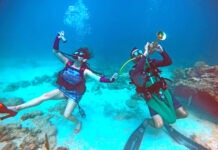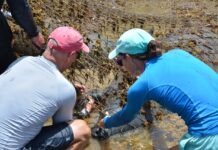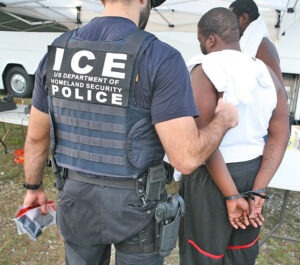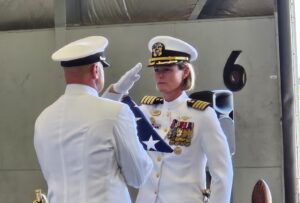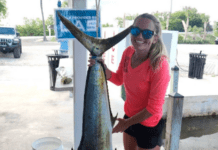
Local officials are set to review the first round of grant applications funded by the Restore Act. And although that sounds simple enough on its face, it’s not. For one, the money doesn’t exist yet and nobody knows how much it might be if it ever materializes.
What money?
There are numerous funds being paid out in association with the Deepwater Horizon oil spill that occurred in the summer of 2010. For example, businesses and individuals are making claims against British Petroleum. The company also faces criminal penalties for violations of laws other than those related to the environment.
But the largest penalties could be tied to the companies alleged violation of the Clean Water Act. If the court finds in favor for the U.S. government, the judgement BP and its partners must pay will be calculated based on the quantity of oil spilled and whether or not gross negligence was a factor in the accident.
“Those are the things that are being decided in trial right now,” said Lisa Tennyson, Monroe County’s Grants Acquisition Director. “The amounts being bandied about range from $5 billion to $25 billion. A finding of gross negligence will quadruple the fine per barrel of oil spilled.”
What legislation?
In the past, damages linked to an oil spill were paid directly to the U.S. Treasury general revenue fund. However, legislators passed the Restore Act in response to the Deepwater Horizon oil spill and it, in essence, routes the money back to the affected communities. The fine will be divided into three pots — federal state and local. In Florida, the local pot of money will bypass the state legislature and be divvied up by the Gulf Consortium, the 23 counties affected by the oil spill. Seventy-five percent of the money will go to the eight counties that were highly impacted by the event and the other 25 percent will be divided by the 15 counties, including Monroe, that experienced lesser impacts. Monroe County Commissioner George Neugent represents the Keys on the Gulf Consortium advisory board.
How much?
“There’s no money yet,” said Chris Bergh, the South Florida conservation director for the Nature Conservancy. “But we will be putting proposals in for the great day when it emerges. Then we’ll see.”
Tennyson estimates Monroe County’s slice of the Restore Act pie could be anywhere from $5 million to $22 million dollars.
“We don’t know how much the settlement will be, or if there will be any money. But for planning purposes, we decided on the figure of $11 million. We are going to use that as a touchstone,” she said.
Groups who wish to receive part of the local funding must apply by Friday, August 30. The applications will be reviewed by an 11-person advisory board of members appointed by Monroe County and Keys municipalities. They are: Patrick Rice, Bill Kelly, Todd German, David Makepeace, John Halas, Ed Swift, Mark Finnegan, Mike Cinque, Ted Blackburn, John Deneale and William Murchie.
The application, Tennyson said, is about eight pages long and is similar to the applications that will be used at the state and federal level. Many of the groups applying for the money, plan to submit the application at multiple levels.
“The project we are proposing is scalable,” Bergh said. “We would like to be considered for as many pots of money as possible.”
Grants will only be awarded to projects that meet one or more of the allowable uses ranked from most important to least important: restoration and protection of nature resources; mitigation of damage to fish, wildlife and natural resources; infrastructure projects benefitting the economy or ecological resources; promotion of tourism including recreational fishing; workforce development and job creation; coastal flood protection; improvements to state parks; implementation of federally approved marine or coastal management plan; promotion of consumption of local seafood; and planning assistance.
For more information, visit www.monroecounty-fl.gov.
Groups set to apply for funds
Projects range from coral to construction
Below is a partial list of groups and municipalities that plan to apply for a share of the local Restore Act funding. Most of the entities plan to submit similar applications at the state and federal levels, as well.
• Monroe County plans on submitting applications for wastewater and stormwater projects, canal restoration and mooring fields (no specific dollar amounts were available at press time).
• The City of Marathon will request funding for a variety of projects ranging from the restoration of the Old 7 Mile Bridge ($11 million); Acquisition of Boot Key ($5-6 million); removal of exotic invasive plants (no figure available); and restoring “flow” from one side of the island to the other with culverts mainly on the Fat Deer Key stretch of U.S.1 (no figure available).
• A group that includes the Nature Conservancy, Coral Restoration Foundation, Mote Marine Laboratory and others will submit a proposal to ramp up coral growing nurseries in the ocean and aquaculture facilities on land to be transplanted to the reef in the Keys and Dry Tortugas (no figure available).
• The Wildlife Foundation of Florida will submit a proposal to create a bonefish and tarpon hatchery in Layton with a strong educational outreach component ($6 million).
• The Florida Keys Community College will also submit several proposals, but a representative declined to describe them or how much they would cost citing concerns about privacy and competition.


